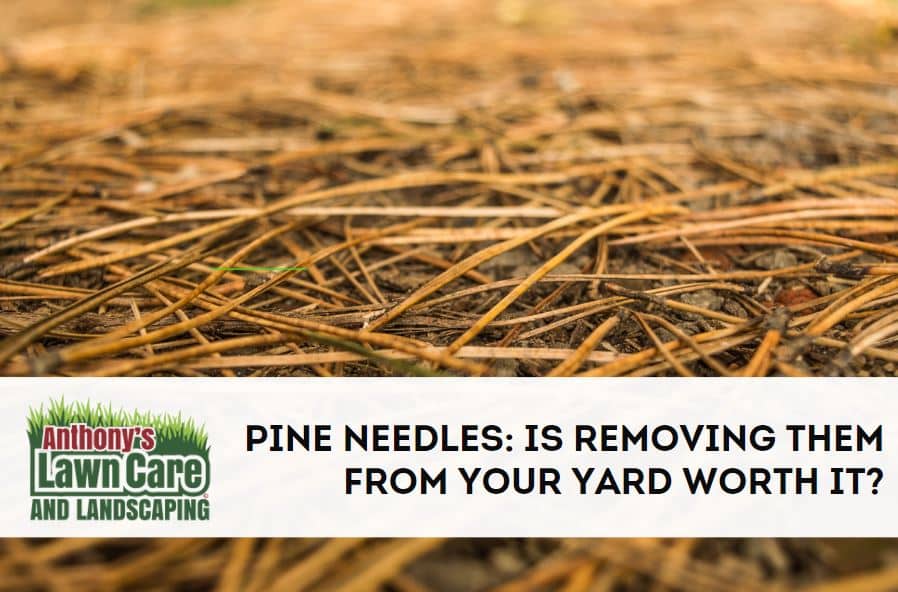Pine needles present an interesting dilemma: although they can be tricky on the golf course, they occasionally fall into your yard. If your yard has any pine trees in the vicinity, you could be subject to a yard full of their offspring on the ground. We are here to dispel any rumors you may have heard about these pesky little things.
Facts about pine needles
Pine needles contain acidity which harms plants and grass. Pine needles will block air and sunlight, preventing both from reaching the soil and stunting the growth of your grass. In addition, the pine needles will steal moisture from the soil, starving the grass. Acidity in the pine needles themselves can seep into the soil, which kills grass and invites weeds.
What are the negative effects of pine needles on the ground?
We begin with the tree from which the pine needles have fallen. A buildup of pine needles under that tree emits acid into the soil. That, coupled with the shade from the tree limiting the amount of sun that reaches the soil can be a hazardous combination. In summation, once that grass is gone, it will be difficult to regrow it.
Dry pine needles are a fire hazard in the American West and Southwest. A bundle of pine needles turn into tinder quickly. The best way to clean them is to get a leaf blower or rake. These are more effective methods because groups of pine needles can become dense and more difficult to go over with a mower.
How often do you clean up pine needles?
The ultimate question does have an answer. At least once a year is recommended. However, be diligent. If you have even one pine tree on your property, you should regularly check to see the quantity of fallen pine needles underneath that tree. We say once per month during the spring and summer and then one time in the winter. A strong barometer of when to rake the lawn is when you cannot see the green grass.


Recent Comments